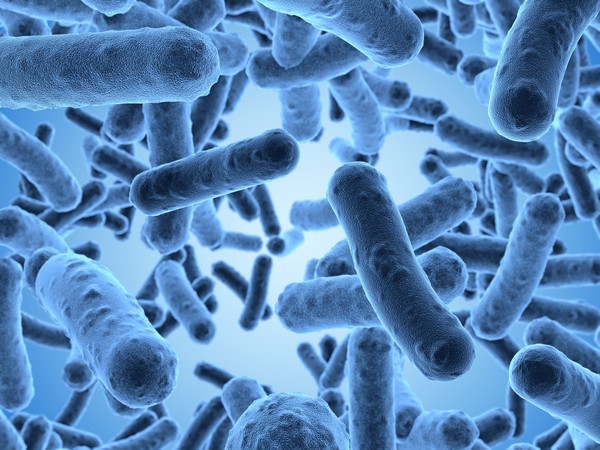97% of the earth’s total water is saline in nature. These saline water covers 70.8% of surface of the earth.Marine environment is the primary source of food, energy and water. Ocean can be considered as the major highway for international trade. It is also responsible for the stabilization of world’s climate. Though it is one of the most adverse environmental conditions for the sustenance of any life forms, the oceanic environment accounts for 32% of world’s net primary production. A recent study showed the presence of around 178,000 species of marine organisms constituting 34 phyla. These varieties of organisms are present in the form of minute microorganisms to the large mammals.In this regard, the marine environment possesses many unique characteristic features that need to be overcome for the sustenance of the marine lives.
Microbes in Ocean
About 80% of the life on earth are present in the marine ecosystem and ocean comprises of around 99% of total organic form. Oceanic environment is home to a huge diversity of life forms ranging from the microscopic phyto- and zoo-planktons to the large cretaceans such as whales in a vast range of specific habitats i.e. sea mounts and thermal vents, coral reefs, kelp forests, tide pools, muddy, sandy and rocky bottoms as well as the open ocean the pelagic zone. These are a huge source of food and medicine.
Any bacteria isolated from marine water, sediments, mangroves, surface of marine organisms or deep-sea hydrothermal vents can be called as marine bacteria. The exclusive feature of the marine bacteria includes their requirement of Na+ and K+ ion for their growth. It has been estimated that in nature i.e. 3.6 × 1029 bacterial cells, 1.3 × 1028archeal cells and 4 × 1030 viruses are found.Marine microbes may be either the microalgae, bacteria, archea, protozoa, fungi or viruses. They are either prokaryotes i.e. they lack membrane bound organells and nucleus in their cells or the eukaryotes i.e. true nuclei are present in the cells. These organisms are extremely small roughly 1/8000th the volume of that of a human cell. The abundance of these marine microbes includes the presence of around one million microbial cells in one ml of sea water.
Applications of Marine Bacteria
Bioremediation
The technique in which microbes are used to clean up the contaminated environments is called as bioremediation. Certain types of microbes feed upon the contaminants i.e. they require the contaminants as their energy source. For effective bioremediation to take place, the presence of correct temperature, nutrients and environmental conditions are required. If these conditions are not perfect, the microorganisms grow very slowly or may die. In this process the contaminants are not cleaned up. The contaminated environments are always adverse in their conditions thus limiting the growth of microbes. However, marine microbes are capable of sustaining the adverse environmental conditions as they inhabit in one of the most adverse marine environments. Thus they possess a de novo characteristics of growth and survival in adverse environmental conditions. When marine microbes are used for in-situ or site specific bioremediation purposes, due to their natural capabilities they carry out bioremediation of toxic contaminants very efficiently.Many studies have reported the huge bioremediation capabilities of marine bacteria for hydrocarbons, heterocyclic compounds, pharmaceutical substances, radionuclides and toxic metals.
Production of Bioactive pigments
Though the isolation and harvest of marine bacteria is highly difficult, the by-product of their metabolism are of highly useful as some of them yield unique colored pigments. The textile industry uses huge amount of synthetic dyes. Thus, their effluents pose serious threat to the environment. In this regard, the natural sources of colors are a huge source of hope for the textile industries. Natural color sources are mostly the microorganisms and the marine microbes are a huge source of natural pigments that have the potential to be used in textile industries as dyes. Some examples of these marine microbes include Monascus, Rhodotorula, Bacillus, Achromobacter, Yarrowia and Phaffia reported to produce various colored pigments such as golden, yellow, red, pink and orange.
As Probiotics
The term first coined by Lily andStillwell in 1965 describes a live microbial supplement that improves the intestinal microbial balance. In this regard, few examples of marine microbes with probiotic applications include Lactobacillus sp., Bifidobacterium sp., Enterococcus sp., Lactococcus sp. etc. Many studies have also reported that,Lactobacillus plantarum, L. brevis, Weissellaconfusa, Lactococcuslactis and L. delbrueckiishow inhibition against pathogenic microbes. Thus, they possess the potential of application as a probiotics in marine shrimp culture i.e. the Litopenaeusvannamei.
Application of marine enzymes
Marine microbes are an excellent source of novel molecules due to their unique metabolic properties. Marine microbial enzymes are of huge importance as the extreme marine environment enables the marine enzymes to be energetic in adverse environmental conditions. A common example of application of marine enzyme in daily life includes the alkaliphilic proteases. The thermostable alkaline proteases isolated from marine organisms are being added in laundry detergents that help in cleaning the clothes even in presence of the organic solvents. Additionally, certain thermostable solvent tolerant enzymes are used in industries associated with biofuel production. Certain group of enzymes isolated and utilized from marine microbes include the proteases, lipases, polysaccharide degrading enzymes such as chitinase and chitosanase, alginate lyases, agarases, Carrageenases and Cellulose and hemicellulose hydrolase.
Source of Drugs
The first antibiotic in history, the penicillin was discovered in late 1920s from a microorganism. Since then many new drugs have been discovered from the microbes and more than 120 drugs produced from microbes are in use now-a-days to treat various infectious diseases, cancer as well as to suppress the immune response to facilitate organ transplant. Marine environment is a huge source of bioactive compounds. These compounds have a huge potential to treat the life threatening diseases with novelty in their chemical composition as well as mode of action. The continuous exploitation of marine drugs may reveal more drugs with uncommon functions in future.
